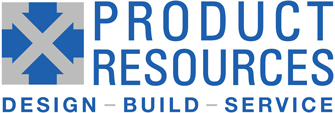The Inspection process is critical to the success of a product and carefully planned for each.
Refer to Chapter 2 where we explain the Assembly Process Design and PFMEA. Every product has a level of performance that it must meet before it can ship. They must also meet safety and workmanship standards. These requirements are used when developing the quality plan for the product and drives decisions on what, how, and when to test or inspect.
Inspections occur at multiple points during the assembly process.
The minimum level of inspection is called “1st Article” inspection where someone familiar with the assembly, a supervisor, or QA engineer has a look at the first one built to catch any assembly errors before the balance of the job is completed. This level of inspection happens with every job and is part of standard practice at Product Resources.
Further testing is designed into the assembly process for each product. If the risk is high enough, testing at a low-level assembly step may be added (e.g., confirming mechanical torque or position, checking components on a circuit board).
Each final assembly (top level, or Product) is tested and inspected before being shipped. The amount of testing and inspection varies with the product requirements, but a typical product may have:
- Functional Test – this demonstrates that all the components are properly installed and working. If a product required leak testing or a similar test, it would typically be part of Functional Test.
- Calibration – if there are sensors (e.g., pressure sensor, flow sensor, photo-sensor) that need to be calibrated, this would be done with appropriate referee instruments that are National Institute of Standards and Technology (NIST) traceable and maintained within their calibration.
- Performance Test – depending on the product requirements, we will check to see if proper pressures and temperatures are reached and maintained, speed of operation is correct, or other performance parameters are met.
- Electrical Safety Test – this is typically a Ground Bond and Hi-Potential test to be sure any structural parts are properly grounded, and any electrical conductors are properly insulated.
- Stress Screening – some products are operated for a time at elevated temperatures to stress components and weed out any marginal components or weak connections.
Once the product has passed all final release testing, it is ready to be packaged and shipped. At this point the product will go through an Outgoing QA check where QA personnel will confirm the product has completed all the processes described in the assembly and test plan. Some products are very straightforward and a simple “Tested” sticker placed on the product is sufficient to confirm proper testing and a passed result. Most products will have a FAT (Factory Acceptance Test) Checklist, which summarizes the status of the product. This checklist will be scrutinized to see if all the steps have been signed off and that the documentation (test reports) that backup the checklist signatures have been completed and the result agrees with the checklist.
Once packed, many products will have a packing checklist as well, to confirm that all the ancillary parts that ship with the product are present with the product.
